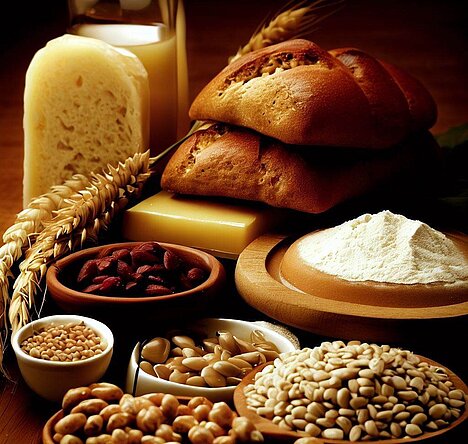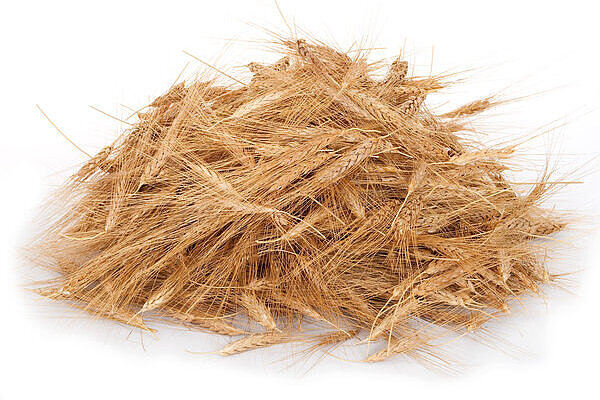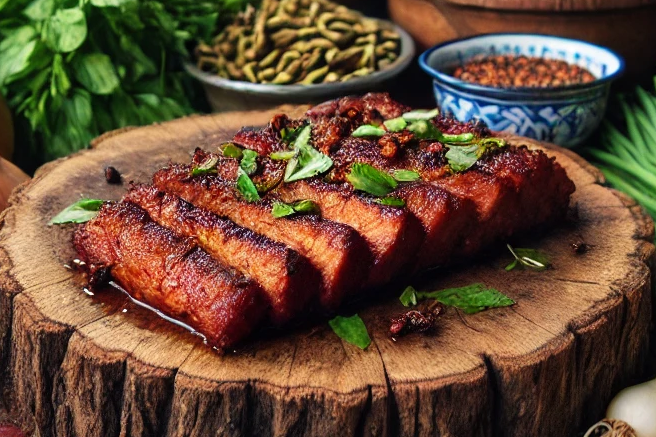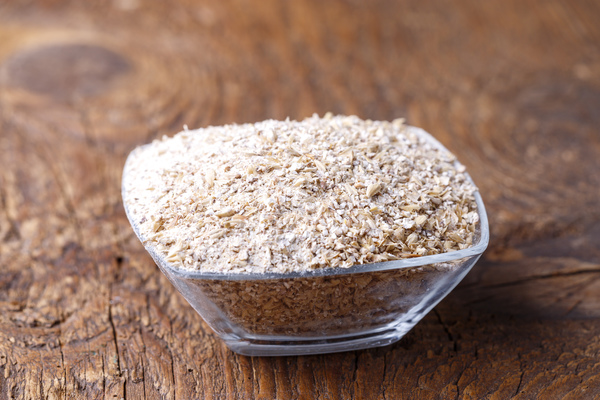Gluten

What is gluten?
Gluten is a collective term for various proteins found in wheat, rye, barley and other cereals. Gluten gives the dough its elasticity and ensures that bread rises and becomes crispy. However, gluten is not only found in bread, but also in many other foods such as pasta, cookies, muesli and ready meals.
Gluten is safe for most people and dogs and can even have health-promoting properties. Gluten provides energy, fiber and important nutrients such as iron, zinc and B vitamins. Gluten can also strengthen the immune system and inhibit inflammation.
When is gluten harmful to dogs?
However, some dogs have an intolerance or allergy to gluten. This means that their immune system recognizes gluten as a foreign substance and produces antibodies against it. This defense reaction can lead to various symptoms, such as
- Diarrhea
- vomiting
- flatulence
- itching
- skin rash
- hair loss
- weight loss
- loss of appetite
- lethargy
Gluten intolerance or allergy can occur in any dog, regardless of breed, age or sex. However, there are some breeds that are genetically more susceptible, e.g. Irish Setters or Border Terriers.
How do you recognize a gluten intolerance or allergy in dogs?
If you suspect that your dog has a gluten intolerance or allergy, you should first consult a vet. They can make an accurate diagnosis and rule out other possible causes for the symptoms. The vet can also carry out a blood test or skin test to determine whether your dog has formed antibodies against gluten.
Another way to diagnose gluten intolerance or allergy in dogs is an elimination diet. This means giving your dog only gluten-free food for a few weeks and observing whether his symptoms improve. If this is the case, you can gradually reintroduce other foods and see if your dog reacts to them.
How can gluten intolerance or allergy in dogs be treated?
The only effective treatment for gluten intolerance or allergy in dogs is a lifelong gluten-free diet. This means that you should no longer feed your dog food containing wheat, rye, barley or other gluten-containing ingredients. You should also make sure that you do not give your dog any treats or chews that contain gluten.
There are now many gluten-free foods on the market that have been specially developed for dogs with a gluten intolerance or allergy. These foods usually contain other cereals such as rice, maize or millet or completely different carbohydrate sources such as potatoes or sweet potatoes. They also contain high-quality animal protein such as beef, chicken or fish.
Gluten is a group of proteins found in wheat, rye, barley and other cereals that give bread and other pasta products their elasticity. Gluten is safe for most people and dogs and can have health-promoting properties. It provides energy, fiber and important nutrients. However, some dogs can develop a gluten intolerance or allergy, where the immune system reacts to gluten with unpleasant symptoms, such as diarrhea, vomiting, skin rashes and more. The diagnosis is made by a vet, who can recommend a gluten-free diet if an intolerance is found. In this case, the dog should be fed a lifelong gluten-free diet specifically designed to meet these needs.
If you notice any signs of hypersensitivity or poisoning in your dog, you should see your vet immediately. We are not a substitute for a vet, but we try to be as accurate as possible. Every dog reacts differently and we recommend you get a second opinion or consult your vet if in doubt.
Stay healthy and take good care of your four-legged friend!😊
Similar to Gluten
Wheat protein, also known as gluten or seitan, is a protein that consists of the gluten protein of wheat. It has a high biological value, i.e. it contains all the essential amino acids that the...
Seitan is made from wheat gluten, the main protein in wheat. By washing wheat flour dough, the starch is removed until only the elastic gluten remains, which is then cooked and often seasoned to...
Barley malt is obtained from barley. Barley is a type of grain and is one of the oldest cultivated plants known to mankind. To produce barley malt, the barley is first soaked and then allowed to...
Triticale is a cereal resulting from the crossing of wheat (Triticum) and rye (Secale). This hybridization aims to combine the best characteristics of both cereals: the high yield and quality of...



